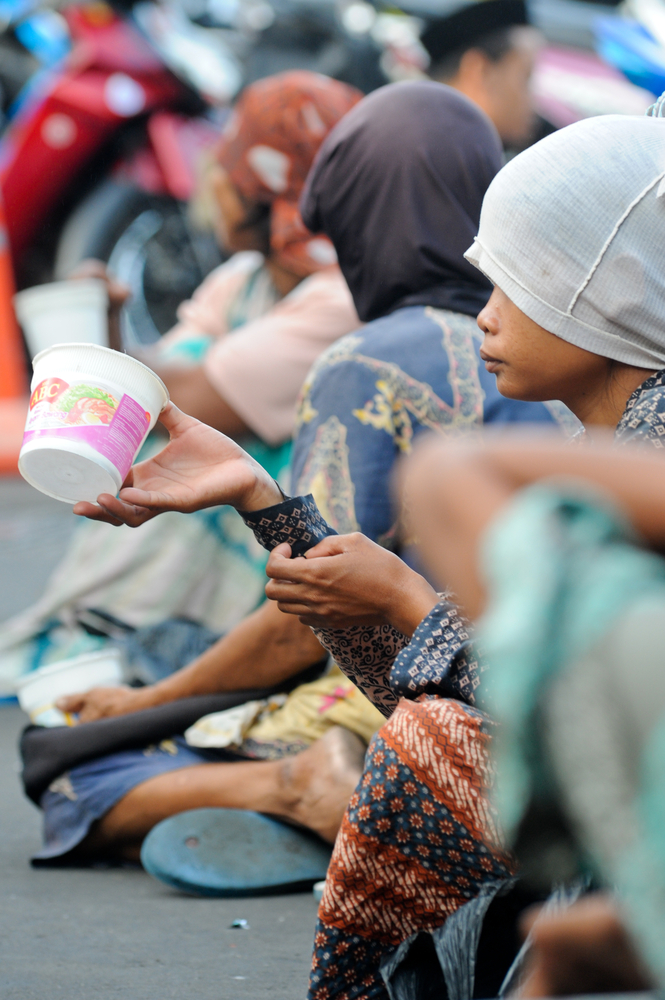|
 Photo by Shutterstock
A mother carries a baby at a Jakarta crossroads. Who are they? Where are they from? A mother carries a baby at a crossroads. Her hand reaches out, her face pleading. Her hand touches the car’s closed.Her hand touches the car’s closed window. It’s called a window, but it’s not certain that people can peer through it into the car, for there’s a thick strip of tinted film, blocking maybe eighty percent of the light, rendering it almost dark. The mothers who are carrying their babies seem to know, however, that the people behind the dark glass can see them. A mother carries a baby at a crossroads. She’s aware that she’s being observed, or at least that she might be being observed. For even though the middle-class car owners try to deny the presence of poverty, as if they are trying to deny a part of themselves, how can poverty be avoided when we’re all so mired in it? The behavior of the new middle class: act as if they never see this poverty at all.
 Photo by Shutterstock
But the mother never surrenders. She considers that just maybe, for a third of a second, one of the new middle class will glance at her before averting the gaze, so she fixes the expression of suffering on her face. This tactic leads to extraordinary spectacles: the mother nurses her baby, shoving this sight up closer to the window, seemingly accidentally but with a clear intention: that the viewer should feel compassion. Often it happens that the dark automatic window lowers and a one thousand rupiah note emerges from behind the glass. Quickly the mother snatches the money, then moves on to another window, one in an unbelievably long line of traffic.

Ketika Lampu Berwarna Merah
This book changed my attitude towards images of poverty. Those who open their windows and extend a note or a coin each have their own reasons for their actions: they want blessings, they just feel pity, or they feel some kind of identification-‘imagine if that woman was my mother and that baby was me.’ The spectacle of a mother nursing her baby at a crossroads is, after all, absurd: the baby sleeps soundly in a cloth slung over the mother’s shoulder, in the peace of a protected world, even as the stinging rays of the sun and the smoke from exhaust pipes blanket it. This more or less deceives the eye into quickly casting a veil of sympathy over the reality: this baby is in fact not her own child, because it’s a rented baby. Sometimes it’s not even clear whose child it really is. At first, of course, it must have been who the mother was, for certainly a woman had to give birth to the child, but perhaps the mother grew apathetic and let the baby pass from hand to hand. Eventually an agent controls the baby’s fate and collects the rental fees from the beggars who use it. Can one begin to imagine what kind of adult this baby will later become?
|